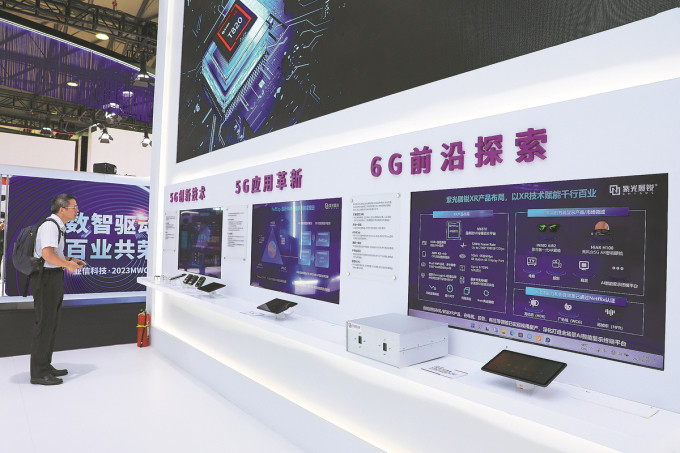While 5G has yet to be deployed in many countries, China has set a goal of commercializing 6G technology by 2030.
6G is the next step of 5G and is estimated to reach speeds of one terabit per second. That means, on average, users can download 142 hours of Netflix content in the highest resolution every second. Compared to 5G, the theoretical speed of 6G network is 100 times faster. According to experts, 6G does not stop at connecting all things but can also connect reality with artificial intelligence, building a digital world parallel to the real world.
In March, at the China Development Forum (CDF), Jin Zhuanglong, the country's Minister of Industry and Information Technology, affirmed that China is leading the world in the speed of 6G research and development. The statement was made after the Global 6G Conference held on March 22 in Nanjing reached a consensus on deploying 6G mobile network services by 2030.
According toChinaDaily, China's ambition is not without foundation. Many businesses, schools, and scientific organizations here have achieved breakthroughs in 6G technology such as new network architecture, integrated AI. On April 22, the 25th Institute of the Chinese Academy of Aerospace Science and Industry successfully tested a wireless transmission speed of 100 Gigabits per second, 100 times higher than the average network speed of 5G (1 Gb/s). This is considered a major breakthrough for China in 6G research.

People visit 5G and 6G technology models at WMC 2023 in Shanghai in June.
In an interview on December 6 on China National Television (CCTV), Wang Zhiqin, deputy director of the China Academy of Information and Communications Technology and leader of the national 6G promotion team, said: "For ordinary users, 6G is simply faster than 5G. But when commercialized, this technology will completely change the way people communicate, opening up a completely new business model."
Accordingly, the three areas that will change dramatically when 6G appears are: connecting human cognition and AI; connecting continuously from Earth to outer space; and connecting digital physics, bringing what is in the physical world to the digital world to establish a parallel world. Mr. Wang Zhiqin emphasized that the future 6G network is not only faster and more stable than 5G, but also a driving force for big data, AI, cloud, blockchain and other fields to develop together.
NikkeiChina’s impressive progress and meticulous planning will help make its 6G ambitions a reality, but its companies also face the harsh reality of sanctions from Western nations.
While China is accelerating the development and standardization of 6G, other countries are not sitting still. Sony and Nokia have also announced advances in new connectivity technology. In 2020, American technology giants, including Apple, Google, and Intel, also joined the Next G Alliance, an alliance with the goal of promoting 6G mobile networks.
FTAccording to experts, when 6G technology takes shape, it could lead to two scenarios. China's breakthroughs could force Western countries to join hands to build a strong and popular standard. If they cannot cooperate, they will have to accept 6G from Huawei and Chinese companies, instead of rejecting it as they are doing with 5G.
Observers say this race could polarize the world in telecommunications, leading to the emergence of different 6G standards. The bottom line is that 6G phones for American users may not be compatible with China's 6G network and vice versa, slowing down global communications speeds.
According to VnExpress